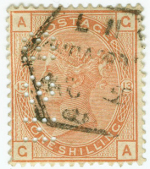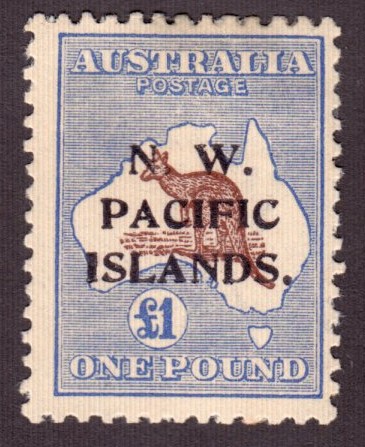
Discussion - Member to Member Sales - Research Center

Discussion - Member to Member Sales - Research Center

I don't know if regumming is a widespread problem for the late 20th century US postage stamps, but that fact may be a clue to detecting a regummed stamp.

1 Member
likes this post.
Login to Like.
Yes, the Giori stamps have a smooth shiny gum. This is not only useful for detecting an unlikely regum, but differentiating stamps like 1338 (Giori) from 1338D (Huck), which has a dull gum with gum breaker ridges.

Login to Like
this post
Excellent observation. There is a reason for the absence of the gum breakers.
But a couple of minor technicalities first (sorry to be nit-picky, but it is to avoid confusion).
1. What you likely observed are gum breakers, not gum ridges. Gum ridges are a common artifact from the gumming of wet-printed stamps. It is caused by the failure of the streams of gum to fully coalesce before reaching the dryer. They are typically spaced very roughly ~1mm apart and are UNINTENTIONAL. Gum breakers are INTENTIONAL. They are typically spaced very roughly ~0.5-2cm apart. Gum ridges are parallel; gum breakers may be parallel or perpendicular to each other. Although you might have seen gum ridges on your 4c Champions of Liberty, I suspect you probably saw gum breakers (they are the consistent feature on the 4c Champions of Liberty). Sorry I don't have a pic -- gum breakers/ridges don't scan well.
2. The Giori Press is also a rotary press. What you called the "Rotary Press" is formally known as the Stickney Press. Scott will record the names of the subsequent rotary presses as they are introduced/used, but still refers to the Stickney Press as "rotary print/press".
Now the reason for the absence of gum breakers. The original rotary press (Stickney) utilized a "wet" printing process. The relatively high moisture content of the paper necessitated breaks in the gum to keep the stamps from curling. Later rotary presses (including the Giori Press) utilized a "dry" printing process. So gum breakers were no longer necessary and were phased out. I'm not sure of the timetable, and haven't checked to see if any of the early Giori printings had gum breakers.
Of course, there are some exceptions in which later dry-printed stamps did have gum-breakers. These are few, and were largely experimental issues. For example, the 6c Nativity stamp of 1970 was printed in 2 types (see Scott #1414 and #1414d). One of the distinguishing characteristics is gum breakers on #1414d. There are other distinguishing characteristics on the face side, in case the stamp is used (w/o gum).
Probably more than anybody wanted to know... 
k

1 Member
likes this post.
Login to Like.
Well said, Kim! They are all "Rotary" presses.
The progression is:
1) Stickney (first rotary press)
2) Huck (first dry print - prototype of Cottrell Press)
3) Cottrell Press
4) Giori Press (where we see gum breakers again)
5) After that I think we get into A Press, B Press, C Press, D Press, and F Press. The Transportation Series has a LOT of presses including Cottrell, B, C, D, F, Andreotti, and Champlain. Happy hunting there!
I prefer plate number singles to solve most of those mysteries!
Lars

1 Member
likes this post.
Login to Like.
First of all thanks for the comments and explanations. I do appreciate the feed back and the technical corrections. I will try to experiment with my scanner and photoshop to see if I can highlight the differences.
Les

Login to Like
this post
Good luck capturing a good image of gum characteristics. If you are able to pull it off I sure would like to know how you do it! I have a couple of examples that I would like to document but I can't get an image worth beans of the gum.

Login to Like
this post
Les, interesting, I had not heard the term Giori Press before. You asked if regumming late 20th century stamps was a problem? Why would anyone do that since they can buy mint nh stamps of that time period for less than face?

Login to Like
this post

06:55:13pm
" ... Why would anyone do that since they can buy mint nh stamps of that time period for less than face? ..."
A good question but when you think about it an obvious answer.
Despite the fact that stamps from that period often inhabit dealer's discount postage boxes, there are minor varieties that sometimes excite collectors, especially those who specialize in a particular issue.
Were you to have a mint never hinged block of such a potential gem, it's market value might be substantially enhanced if was not re-gummed.

Login to Like
this post

This may be old hat to most of you, but the other day I noticed that during the 1960's US stamps that were printed on the Rotary Press showed ridges on the gum side of the stamp. Giori press printed stamps( usually multicolored ) would have a flat uniform gum application. Just compare a 4c Champion of Liberty to its 8c companion.
I don't know if regumming is a widespread problem for the late 20th century US postage stamps, but that fact may be a clue to detecting a regummed stamp.

1 Member
likes this post.
Login to Like.

re: An Observation about Rotary Press and Giori Press stamps
Yes, the Giori stamps have a smooth shiny gum. This is not only useful for detecting an unlikely regum, but differentiating stamps like 1338 (Giori) from 1338D (Huck), which has a dull gum with gum breaker ridges.

Login to Like
this post

re: An Observation about Rotary Press and Giori Press stamps
Excellent observation. There is a reason for the absence of the gum breakers.
But a couple of minor technicalities first (sorry to be nit-picky, but it is to avoid confusion).
1. What you likely observed are gum breakers, not gum ridges. Gum ridges are a common artifact from the gumming of wet-printed stamps. It is caused by the failure of the streams of gum to fully coalesce before reaching the dryer. They are typically spaced very roughly ~1mm apart and are UNINTENTIONAL. Gum breakers are INTENTIONAL. They are typically spaced very roughly ~0.5-2cm apart. Gum ridges are parallel; gum breakers may be parallel or perpendicular to each other. Although you might have seen gum ridges on your 4c Champions of Liberty, I suspect you probably saw gum breakers (they are the consistent feature on the 4c Champions of Liberty). Sorry I don't have a pic -- gum breakers/ridges don't scan well.
2. The Giori Press is also a rotary press. What you called the "Rotary Press" is formally known as the Stickney Press. Scott will record the names of the subsequent rotary presses as they are introduced/used, but still refers to the Stickney Press as "rotary print/press".
Now the reason for the absence of gum breakers. The original rotary press (Stickney) utilized a "wet" printing process. The relatively high moisture content of the paper necessitated breaks in the gum to keep the stamps from curling. Later rotary presses (including the Giori Press) utilized a "dry" printing process. So gum breakers were no longer necessary and were phased out. I'm not sure of the timetable, and haven't checked to see if any of the early Giori printings had gum breakers.
Of course, there are some exceptions in which later dry-printed stamps did have gum-breakers. These are few, and were largely experimental issues. For example, the 6c Nativity stamp of 1970 was printed in 2 types (see Scott #1414 and #1414d). One of the distinguishing characteristics is gum breakers on #1414d. There are other distinguishing characteristics on the face side, in case the stamp is used (w/o gum).
Probably more than anybody wanted to know... 
k

1 Member
likes this post.
Login to Like.

re: An Observation about Rotary Press and Giori Press stamps
Well said, Kim! They are all "Rotary" presses.
The progression is:
1) Stickney (first rotary press)
2) Huck (first dry print - prototype of Cottrell Press)
3) Cottrell Press
4) Giori Press (where we see gum breakers again)
5) After that I think we get into A Press, B Press, C Press, D Press, and F Press. The Transportation Series has a LOT of presses including Cottrell, B, C, D, F, Andreotti, and Champlain. Happy hunting there!
I prefer plate number singles to solve most of those mysteries!
Lars

1 Member
likes this post.
Login to Like.

re: An Observation about Rotary Press and Giori Press stamps
First of all thanks for the comments and explanations. I do appreciate the feed back and the technical corrections. I will try to experiment with my scanner and photoshop to see if I can highlight the differences.
Les

Login to Like
this post

re: An Observation about Rotary Press and Giori Press stamps
Good luck capturing a good image of gum characteristics. If you are able to pull it off I sure would like to know how you do it! I have a couple of examples that I would like to document but I can't get an image worth beans of the gum.

Login to Like
this post

re: An Observation about Rotary Press and Giori Press stamps
Les, interesting, I had not heard the term Giori Press before. You asked if regumming late 20th century stamps was a problem? Why would anyone do that since they can buy mint nh stamps of that time period for less than face?

Login to Like
this post
Silence in the face of adversity is the father of complicity and collusion, the first cousins of conspiracy..
13 Nov 2013
06:55:13pm
re: An Observation about Rotary Press and Giori Press stamps
" ... Why would anyone do that since they can buy mint nh stamps of that time period for less than face? ..."
A good question but when you think about it an obvious answer.
Despite the fact that stamps from that period often inhabit dealer's discount postage boxes, there are minor varieties that sometimes excite collectors, especially those who specialize in a particular issue.
Were you to have a mint never hinged block of such a potential gem, it's market value might be substantially enhanced if was not re-gummed.

Login to Like
this post

